Through ANIMA MUNDI at STIGTER VAN DOESBURG in Netherland, Hans van der Ham sought to demonstrate that the idea of imbuing inanimate matter with human-like qualities is not a recent phenomenon. Ancient Greeks and Renaissance thinkers, as well as tribal communities, have long established emotional and spiritual connections with depictions of the human body.
The exhibition, titled FACING HUMANOIDS, delved into the parallels between historical practices and modern developments. It highlights the growing resemblance between robots and humans, and the enduring concept of animating matter. How are we transforming our body? Which scenario in the future?
Hans van der Ham studied classical piano at the Royal Conservatory in The Hague and the Utrecht Conservatory (graduated 1984). He then studied autonomous art at the Academy of Fine Arts in Rotterdam where he graduated with paintings, drawings and graphics (graduated 1989). However, Van der Ham was mainly active for more than 30 years as a sculptor and became known for his black clay sculptures. Vulnerable souls, wrapped in rock hard material. But his indefinable worlds on paper, made of gouache or black ink, also characterize his oeuvre. Until 2020, the need arose to return to his old metier and to make a new start from the spatial work with paintings in various formats.
Van der Ham has been working as an independent visual artist in Rotterdam since 1989 and regularly has exhibitions at home and abroad. His work is represented by Stigter Van Doesburg gallery, Amsterdam and by galleri KANT, Copenhagen. His work is included in various museum and corporate collections.
In 2012, Van der Ham co-founded Garage Rotterdam, together with a Rotterdam patron, where he was responsible until 2015 as curator and artistic director. Van der Ham makes exhibitions on a regular basis, including for Museum Boijmans Van Beuningen, Rotterdam: as a guest curator in 2018 he produced the exhibition ANIMA MUNDI.
Boemio spoke with Van der Ham.
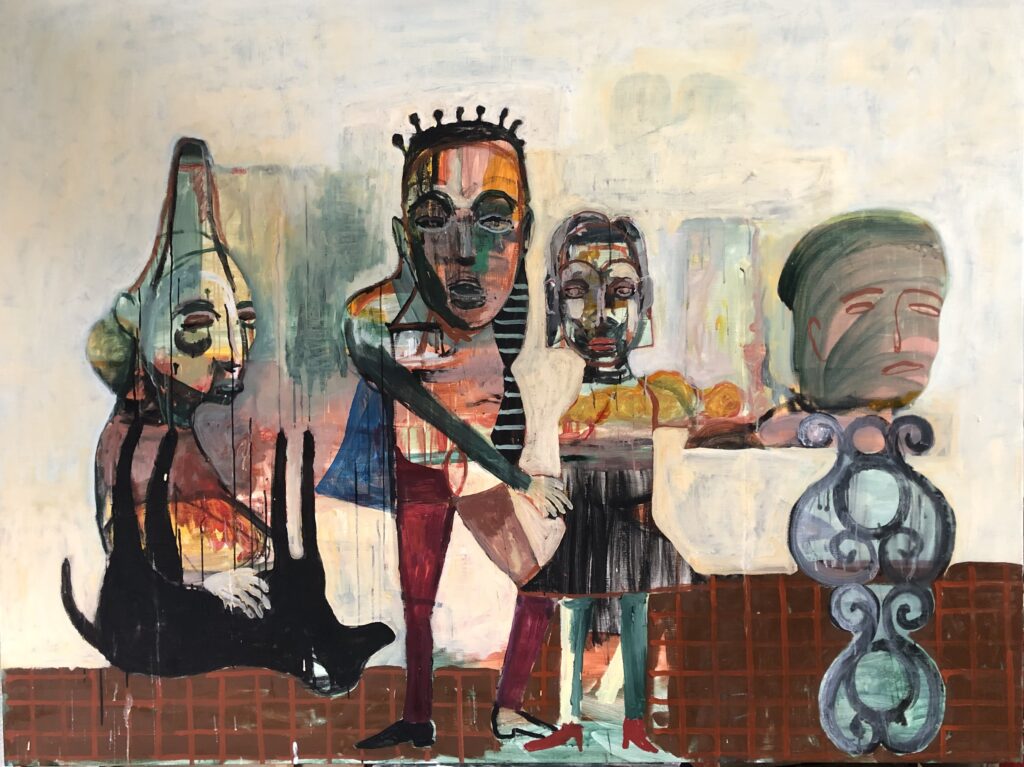
Sacrifice
Camilla Boemio: Can you introduce your artistic practice and background? When you make artworks do you have a specific audience in mind?
Hans van der Ham: The moment I enter my studio and close the door behind me, the outside world no longer exists. I am my own audience. The only thing that matters is my personal confrontation with the empty canvas. Each painting is like entering a labyrinth, a voluntarily chosen panic.
At such a moment I allow myself to be alone with my own inner world.
The process is more important than the result, it’s about the way to it. There is no preconceived plan and no literal message. Paintings are often painted over, and it is never certain when it will be finished.
For me, an exhibition is often comparable to a film still, the process has been stopped for a while. This is the moment when the outside world becomes important. Then interaction can arise. As a performing musician this works differently. In addition, you are dealing with a (future) audience because the work of art only exists (and disappears again) at the moment of execution itself. Time plays a role here. This is a completely different way of communicating with the audience because creating and interacting with the audience take place at the same time. For me, music therefore still remains the highest art form. Being taken into a period of time is an essential aspect of having an emotion.
CB: Which artists have influenced or inspired you?
HVDH: During my studies at the art academy, painting had just been ‘reinvented’ again. On the one hand there were Die Neue Wilden in Germany and on the other hand the Transavanguardia Italiana, before which the conceptual in art predominated for a long time.
A painter who has greatly influenced me is Markus Lüpertz. What really appealed to me about his work is his daring to create a painting without a preconceived plan. For him, painting itself was the most important thing. Let the paint itself tell ‘the story’. The visible emotion in the way of painting really appealed to the musician in me.
I think the Renaissance is the most interesting style period. What appeals to me in painters such as Fra Angelico, Rogier van de Weyden and Hans Memling is the ability to reduce something to its essence. There is nothing too much in the use of materials and composition, everything has its function, there is nothing that can distract from what it is really about, leaving a pure emotion.
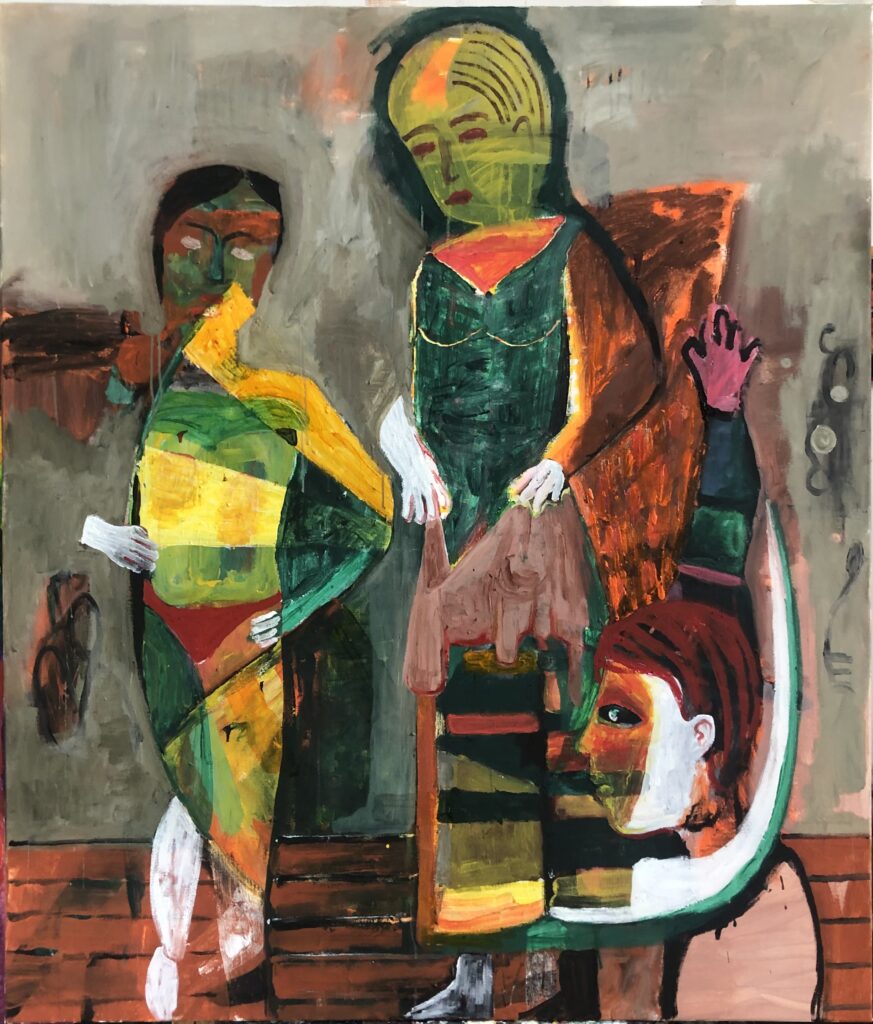
The Fall of the Flesh
CB: In what way are historical references so important to create an artwork?
HVDH: When I start a painting I try to avoid thinking as much as possible. It is primarily about color, shape and spatiality within the flat surface. In the beginning this produces an abstract image. The shapes that arise in this way appeal to my subconscious. From there other (figurative) forms arise. I compare this to an orchestral score without soloists. Then recognizable shapes (the soloists) appear over this surface. Mostly human figures, but also things that have stuck in my distant memory. I have always been very fascinated by things like alchemy, esotericism, spirituality but also tribal cultures. This then creeps into the work.
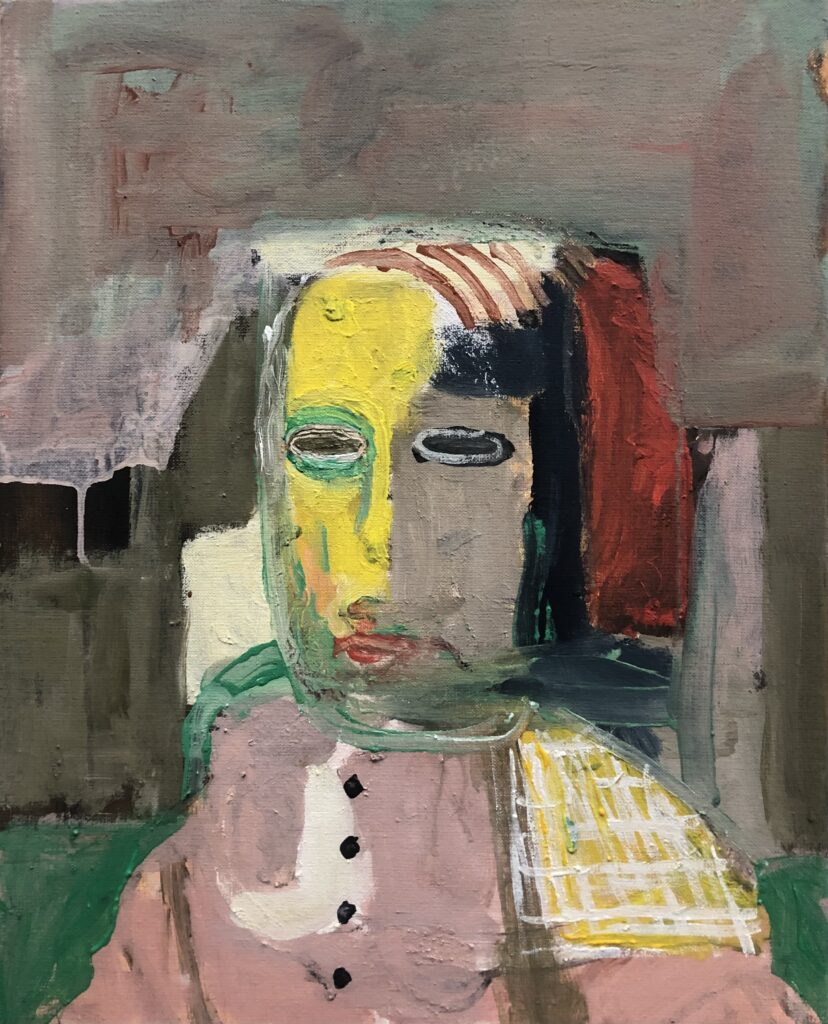
Study for a portrait
CB: In what ways are colors influential in your canvas?
HVDH: In 2018 I created the exhibition ANIMA MUNDI for Museum Boijmans Van Beuningen, Rotterdam, an exhibition about animation.
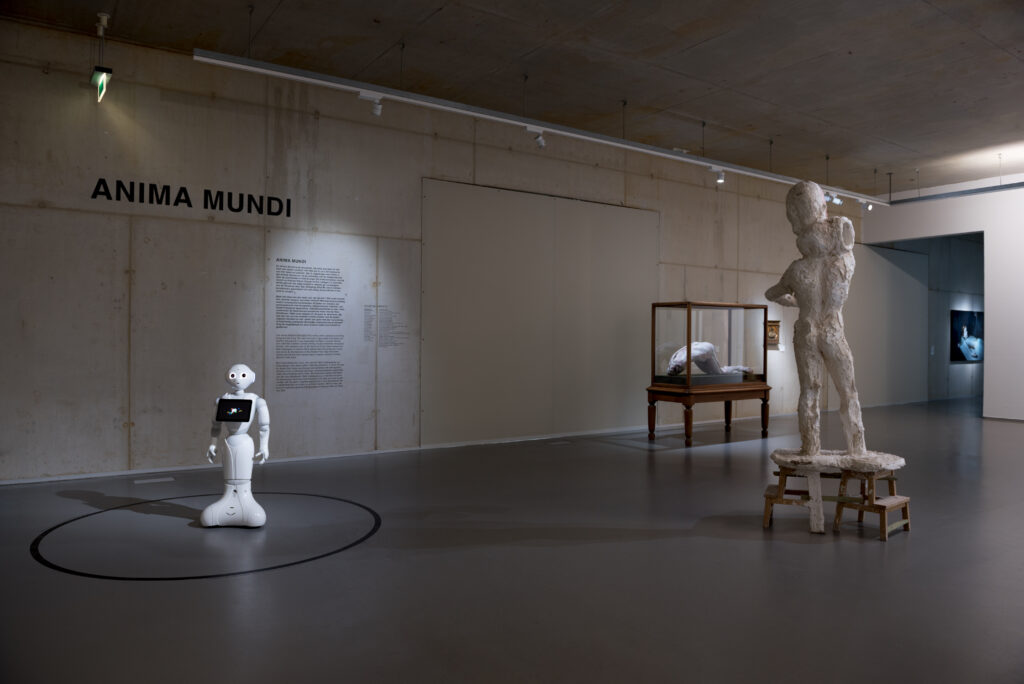
The reason for this was the observation that we live in a time in which, due to increasing robotization, digitalization and Artificial Intelligence, we humans have started to have a different view of matter.
Robots are increasingly taking the place of people, computers can now think for themselves, so it is not surprising that it will not be long before other human qualities are also attributed to something that is actually dead matter.
But this, as I tried to demonstrate in ANIMA MUNDI, is nothing new.
Both the ancient Greeks and Renaissance people already had emotional relationships with images related to the human body. This went further than a purely artistic experience.
Tribal peoples have a spiritual relationship with images or objects related to the human figure. These images/objects are not images of ancestors or gods but representatives of them.
In other words, they attribute a soul to matter. I find these similarities interesting and they play an important role in my new work. Hence the title for this exhibition; -FACING HUMANOIDS- The literal translation of HUMANOIDS is ‘human-like’. To me this applies both to the increasingly human robots and to the tribal idea that matter could be animated.
In addition, due to the developments mentioned, we ourselves are becoming more and more ‘humanoids’. Increasing robotization also has an unnoticed influence on how we will interact with each other and our environment in the future.
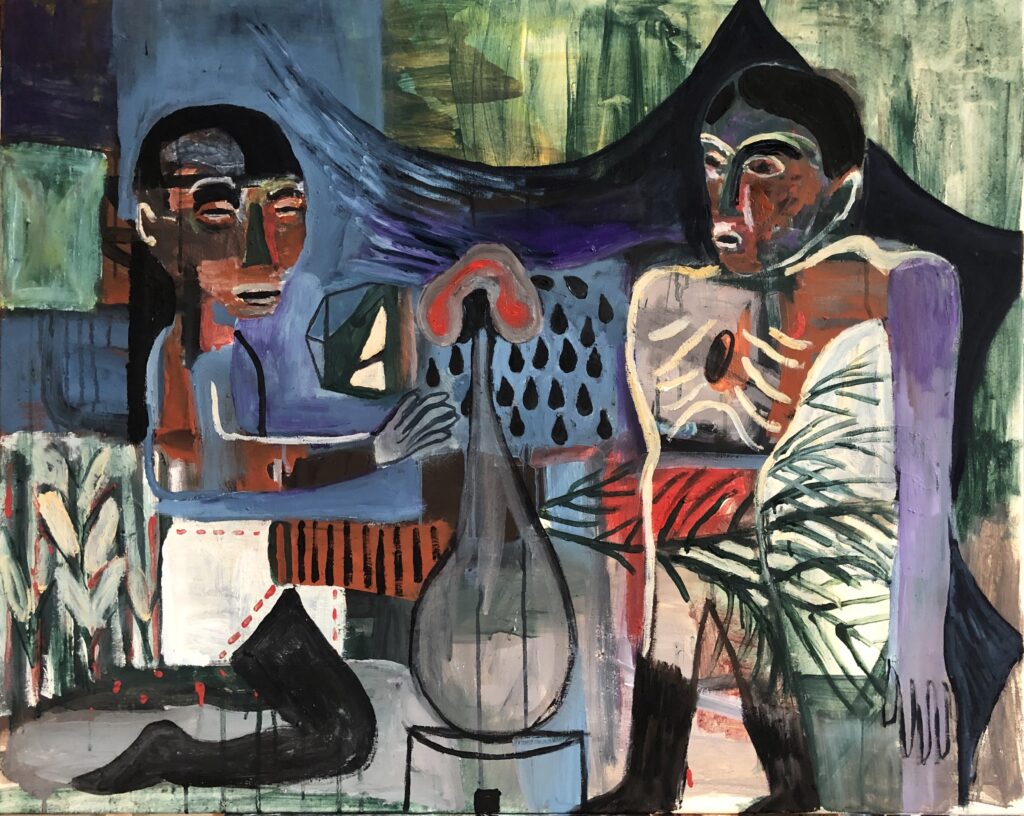
The Process
CB: This seductive view is a strong reflection on the future dynamics of human-machine interactions and their implications for society and in the environment. In your opinion what is the scenario of the future?
HVDH: In 2018, as a guest curator, I created the exhibition ANIMA MUNDI for Museum Boijmans Van Beuningen, Rotterdam.
By means of a small journey through art history – with excursions into ethnography, alchemy, anatomy, biotechnology and robotics – in ANIMA MUNDI I wanted to provide insight into which aspects play a role in the creation of an emotional bond between people and works of art.
A person easily becomes emotionally involved with his artificially created image. This has been around forever and even goes back to the ancient Greeks. For everyone, it starts as a child with attachment to a doll or teddy bear as a substitute for their mother. In Japan a robot is treated as a real part of the family.
Works of art can be lifelike, but they are not made of flesh and blood. However, they can become animated, so to speak. Animation is also a central concept in areas other than the visual arts. According to natural religions, everything is permeated by good and evil spirits that can be appeased through rituals with specially designed costumes and attributes. In ethnography the world of the spirits and that of the living come together.
In these cultures it is evident that an object is not a representation of an ancestor or deity, as in our culture, but a carrier of this, so that these objects are treated as if they were living beings. I see something similar happening within current developments in robotics and AI.
Apparently it is a typical human need to assign a soul to something.
The question now, however, is whether robots will become more like people or people will become more like machines, programmed by a society in which the advance of technology has only just begun.
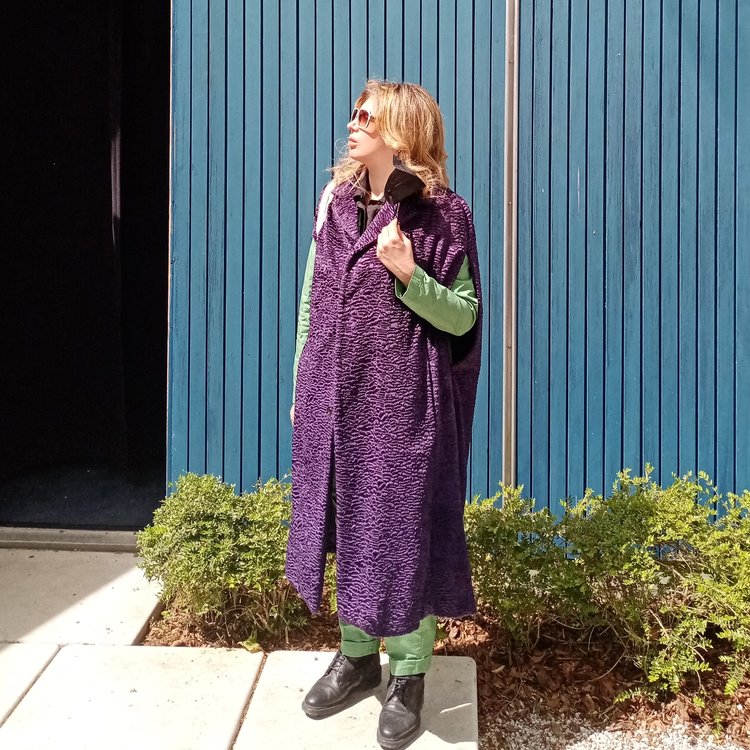
Camilla Boemio is an internationally published author, curator, and member of the AICA (International Arts Critics) and IKT (International) based in Rome. In 2013, Boemio was the co-associate curator of PORTABLE NATION: Disappearance as Work in Progress – Approaches to Ecological Romanticism, the Maldives Pavilion at the 55th International Art Exhibition La Biennale di Venezia. In 2016, Boemio curated Diminished Capacity, the First Nigerian Pavilion at 15th International Architecture Exhibition La Biennale di Venezia. Boemio’s recent curatorial projects include her role as co-associate curator at Pera + Flora + Fauna. The Story of Indigenousness and The Ownership of History, an official collateral event at the 59th International art exhibition La Biennale di Venezia, 2022. Invitations to speak include the Tate Liverpool, MUSE Science Museum, Pistoia Musei and the Cambridge Festival 2021 at Crassh in the UK.





















































